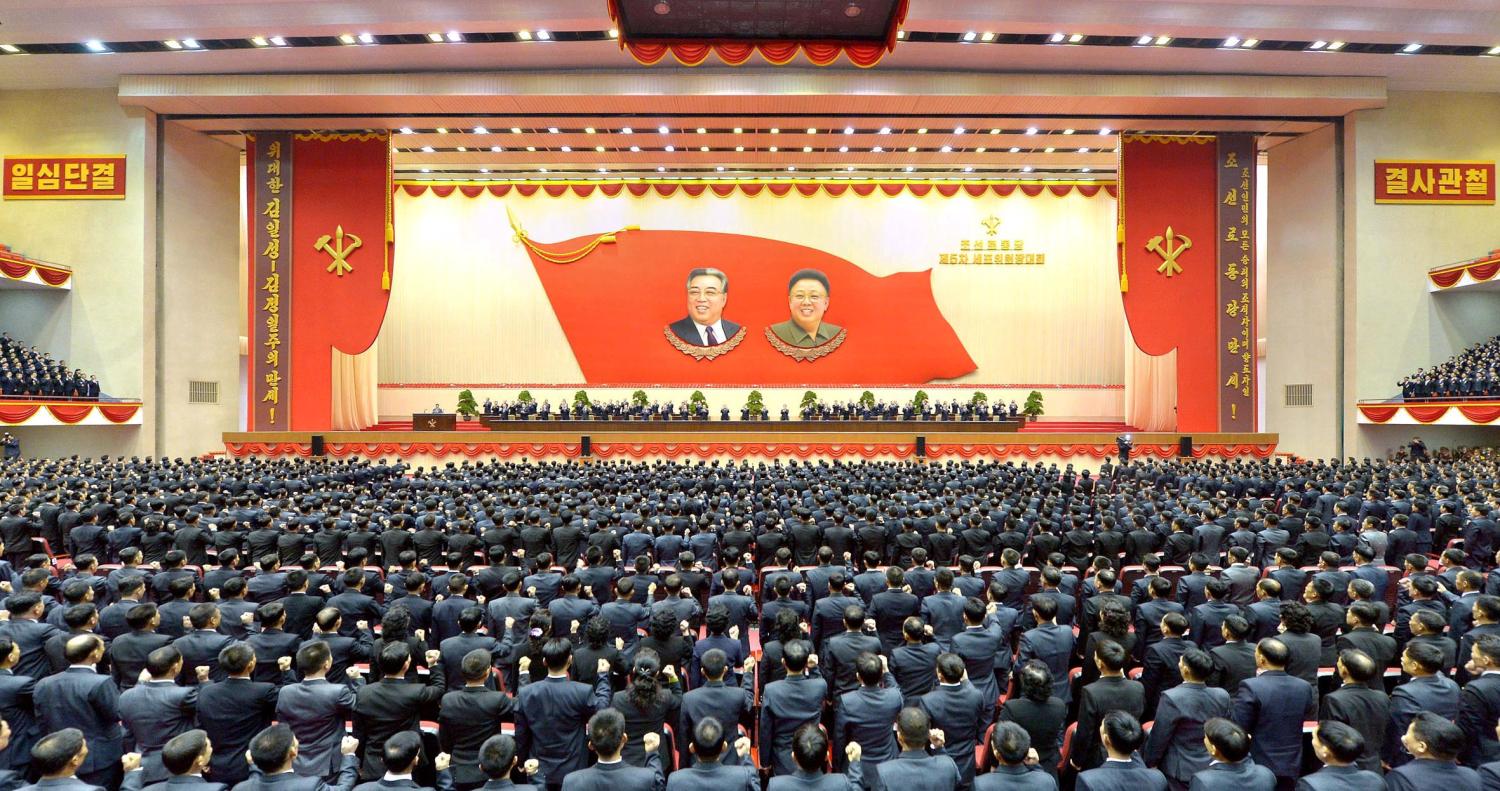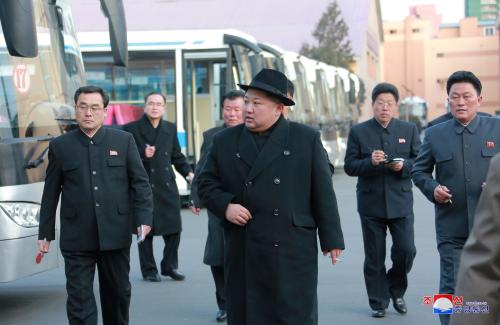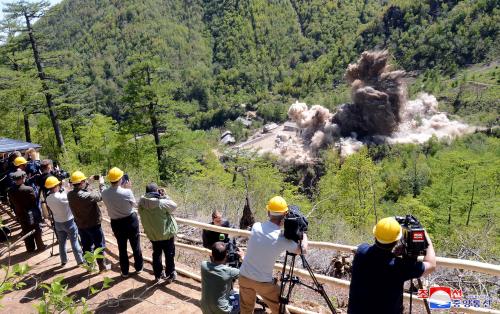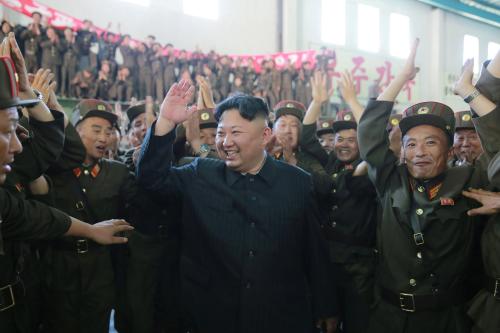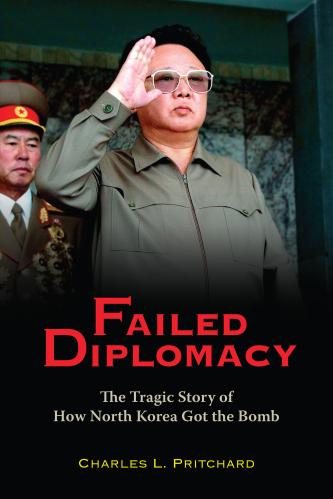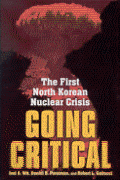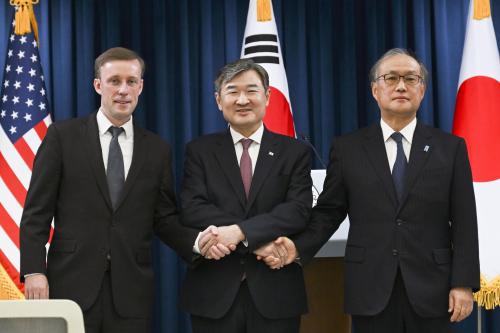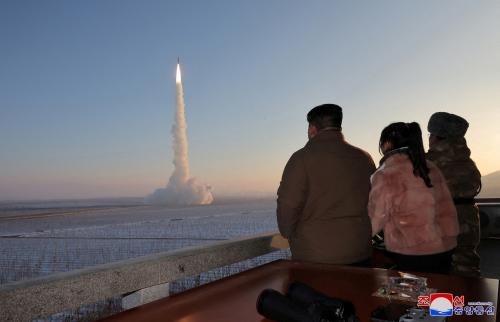This paper was presented at the 6th Brookings-Korea Research Institute for National Strategy (KRINS) joint conference, “Strategy of the Kim Regime and the ROK-U.S. Response in the Era of North Korea’s Nuclear Upgrades,” in Seoul on January 17, 2018.
Most experts and scholars seem to agree that North Korea’s national security strategy seeks to ensure its independence and sovereignty under the leadership of the Kim family and to maintain strategic relevance and ability to drive events on the Korean Peninsula in a region dominated by larger, wealthier neighbors. (Judging from the swagger of Kim’s New Year’s address, he seems to think he is succeeding in achieving or solidifying these goals.) To achieve these enduring goals, Pyongyang has placed a high priority on the development of nuclear weapons, while maintaining its large conventional military capabilities, even as the country and the vast majority of its citizens suffer from poverty and food-insecurity. As the Director of National Intelligence testified, “Pyongyang’s nuclear capabilities are intended for deterrence, international prestige, and coercive diplomacy.” In addition, Kim’s personal stamp on the nuclear weapons program, the regime’s public celebration of various technical milestones through parade, the promotion of the scientists and technicians, and photographs and media statements suggest that it is also a source of great domestic pride and a vital part of Kim’s brand. As a prominent political scientist has pointed out, Kim Jong-un has succeeded in accelerating nuclear weapons capabilities because of his determination to develop the technologies, elevating and encouraging scientists and tolerating failure as part of the learning process, and rewarding them with exclusive privileges.
Despite the regime’s notorious opaqueness, the current Kim regime has been remarkably “transparent” in conveying what it plans to do. In addition to flouting the Leap Day Deal in 2012 with two satellite launches – one failed – and his first of four nuclear tests in 2013, Kim has sped forward on nuclear and ballistic missile development and has flaunted them through parades, state media statements, and photographs. He has also codified the North’s status as a nuclear-armed state by inscribing that description into the revised constitution in 2012, and in 2013 announced his byungjin policy, “a brilliant succession and development onto a new, higher stage of the original line of simultaneously developing the economy and national defense,”” as the state media noted. The North also said, “When the Party’s new line is thoroughly carried out, [North Korea] will emerge as a great political, military, and socialist economic power and highly-civilized country which steers the era of independence.”
In the six years since he came to power, Kim has tested and pushed the boundaries of international tolerance for his actions, including a powerful sixth nuclear test with an estimated yield as high as 150 kilotons and ICBM tests this year, calculating that he can handle whatever punishment is meted out. And to a large extent, he has maintained the initiative on the Korean Peninsula, to the frustration of the United States and his neighbors. Kim has engaged in a rhetorical war with President Trump, not wavering in this public confrontation and consistently displaying his confidence that he can bully even the president of the United States. At the same time, he’s engaged in a steady drumbeat of internal purges, including the shocking public spectacle of the arrest and execution of his uncle-by-marriage Jang Song-thaek in 2013, and collecting a slew of titles, cementing his position as the sole leader of North Korea.
Yet North Korea has consistently asserted, as it did in the 2013 Law on Consolidating its Position of Nuclear Weapons State, that the regime’s nuclear weapons are for deterrence and that the reason for the North’s position is the United States. Subsequent authoritative statements, including the North Korean foreign minister’s remarks at the United Nations General Assembly in September 2017, have continued to hew to a similar line: “[North Korea’s] national nuclear force is, to all intents and purposes, a war deterrent for putting an end to nuclear threat of the U.S. and for preventing its military invasion,” he said, adding that Pyongyang’s ultimate goal is to “establish the balance of power with the U.S.”
As if there was any doubt, two weeks ago, Kim Jong-un in his New Year’s address said, North Korea “as a peace-loving nuclear power…will not use a nuclear weapon as long as the aggressive hostile forces do not infringe upon our country’s sovereignty and interests, and will not threaten any country or region with nuclear [weapons.] However, we will resolutely respond to any act of destroying peace and security on the Korean Peninsula.”
While advancing its nuclear weapons program, the Kim Jong-un regime has also rejected any sustained engagement or dialogue with the United States and its neighbors, including China, North Korea’s primary source of political and economic support. This is a departure from the approach of Kim’s grandfather and father who talked about their desire to work toward denuclearization to manipulate the regional environment. They also engaged in nuclear negotiations in exchange for political and economic concessions from the U.S., South Korea, Japan, and China. But under Kim 3.0, it has been “Fortress North Korea,” as Kim has rebuffed all efforts at engagement and has made it clear that his country’s nuclear weapons were not bargaining chips. He has also let the relationship with China fester, making only the bare minimum effort to maintain stable ties, and fueling debate in China about Beijing’s relationship with Pyongyang. Kim’s Fortress North Korea and his insistence on advancing and demonstrating nuclear weapons capabilities at breakneck speed have had real consequences on North Korea’s economy, given the tightening noose of sanctions constraining the regime’s ability to obtain hard currency. It is unclear if Kim recognizes that his actions have the potential to upend his nuclear ambitions, or if he knows what to do once he achieves the final goal of having a credible and reliable deterrent.

